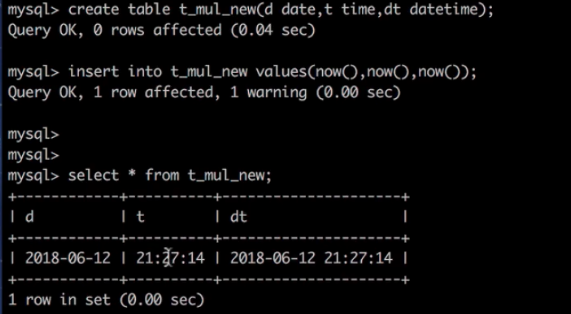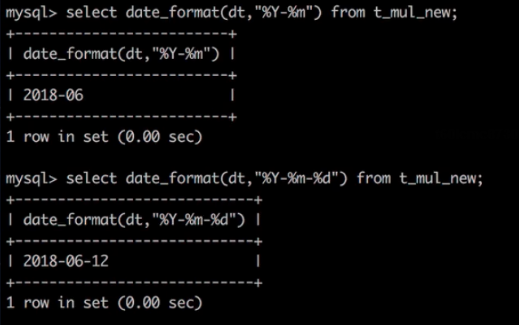9 个人站点页面的文章查询 & 个人站点页面的渲染布局 & 个人站点页面的跳转过滤功能 & 知识点补充

urls.py
from django.urls import re_path
urlpatterns = [
...
# 个人站点url
re_path('^(?P<username>\w+)/$', views.home_site),
# 个人站点页面的跳转过滤功能
re_path('^(?P<username>\w+)/(?P<condition>tag|category|archive)/(?P<param>.*)/$', views.home_site),
]
views.py
from django.shortcuts import render
from django.db.models import Count
from blog import models
...
def home_site(request, username, **kwargs):
"""个人站点视图函数"""
user_obj = models.UserInfo.objects.filter(username=username).first()
if not user_obj: # 判断用户是否存在
return render(request, "not_found.html")
# 查询当前站点对象
blog_obj = user_obj.blog
# 当前用户或者当前站点对应所有的文章
# 基于对象查询
# article_list = user_obj.article_set.all()
# 基于__查询
article_list = models.Article.objects.filter(user=user_obj)
if kwargs: # 区分访问的是站点页面还是站点下的跳转页面
condition = kwargs.get('condition')
param = kwargs.get('param')
if condition == "category":
article_list = article_list.filter(category__title=param)
elif condition == "tag":
article_list = article_list.filter(tags__title=param)
else:
year, month = param.split('-')
article_list = article_list.filter(create_time__year=year, create_time__month=month)
# 查询当前站点的每一个分类名称以及对应的文章数
cate_list = models.Category.objects.filter(blog=blog_obj).values("pk").annotate(c=Count("article__title")).values_list("title", "c")
# print(cate_list)
# 查询当前站点的每一个标签名称以及对应的文章数
tag_list = models.Tag.objects.filter(blog=blog_obj).values("pk").annotate(c=Count("article")).values_list("title", "c")
# print(tag_list)
# 查询当前站点每一年月的名称以及对应的文章数
# 方式1:
date_list = models.Article.objects.filter(user=user_obj).extra(select={'y_m_date': 'date_format(create_time, "%%Y-%%m")'}).values("y_m_date").annotate(c=Count('nid')).values_list("y_m_date", "c")
# print(date_list) # <QuerySet [{'y_m_date': '2022-08', 'c': 2}]>
# 方式2:
# date_list = models.Article.objects.filter(user=user_obj).annotate(month=TruncMonth("create_time")).values("month").annotate(c=Count('nid')).values_list("month", "c") # 年月分组
# print(date_list) # <QuerySet [(datetime.datetime(2022, 8, 1, 0, 0), 2)]>
return render(request, "home_site.html", locals())
home_site.html
{% load static %}
<!DOCTYPE html>
<html lang="en">
<head>
<meta charset="UTF-8">
<title>Title</title>
<link rel="stylesheet" href="{% static 'blog/bootstrap/css/bootstrap.css' %}">
<style>
* {
margin: 0;
padding: 0;
}
.header {
width: 100%;
height: 55px;
background-color: #369;
}
.header .title {
font-size: 18px;
font-weight: 100;
line-height: 60px;
color: white;
margin-left: 15px;
margin-top: -10px;
}
.backend {
float: right;
color: white;
text-decoration: none;
font-size: 14px;
margin-right: 10px;
margin-top: 10px;
}
.pub_info {
margin-top: 10px;
color: darkgray;
}
</style>
</head>
<body>
<div class="header">
<div class="content">
<p class="title">
<span>{{ blog_obj.title }}</span>
<a href="" class="backend">管理</a>
</p>
</div>
</div>
<div class="container">
<div class="row">
<div class="col-md-3">
<div class="panel panel-warning">
<div class="panel-heading">我的标签</div>
<div class="panel-body">
{% for tag in tag_list %}
<p><a href="/{{ username }}/tag/{{ tag.0 }}">{{ tag.0 }} ({{ tag.1 }})</a></p>
{% endfor %}
</div>
</div>
<div class="panel panel-danger">
<div class="panel-heading">随笔分类</div>
<div class="panel-body">
{% for cate in cate_list %}
<p><a href="/{{ username }}/category/{{ cate.0 }}">{{ cate.0 }} ({{ cate.1 }})</a></p>
{% endfor %}
</div>
</div>
<div class="panel panel-success">
<div class="panel-heading">随笔归档</div>
<div class="panel-body">
{% for date in date_list%}
<p><a href="/{{ username }}/archive/{{ date.0 }}">{{ date.0 }} ({{ date.1 }})</a></p>
{% endfor %}
</div>
</div>
</div>
<div class="col-md-9">
<div class="article_list">
{% for article in article_list %}
<div class="article-item clearfix">
<h5><a href="">{{ article.title }}</a></h5>
<div class="article-desc">
{{ article.desc }}
</div>
<div class="small pub_info pull-right">
<span>发布于 {{ article.create_time|date:"Y-m-d H:i" }}</span>
<span><iclass="glyphicon glyphicon-comment"></i> 评论({{ article.comment_count }})</span>
<span><i class="glyphicon glyphicon-thumbs-up"></i> 点赞({{ article.up_count }})</span>
</div>
</div>
<hr>
{% endfor %}
</div>
</div>
</div>
</div>
</body>
</html>
成品看图:


知识点补充:

如何只拿出,dt字段中的年月字段?

知识点补充:extra
有些时候复杂的sql语句,Django无法去对应。
extra(select=None, where=None, params=None, tables=None, order_by=None, select_params=None )
有些情况下,Dj ango的查询语法难以简单的表达复杂的WHERE子句,对于这种情况,Django 提供了extra() QuerySet修改机制,它能在QuerySet生成的SQL从句中注入新子句
extra可以指定一个或多个参数,例如select, where or tables.这些参数都不是必须的,但是你至少要使用一个!要注意这些额外的方式对不同的数据库引擎可能存在移植性问题。(因为你在显式的书写SQL语句)
参数之select
The select 参数可以让你在SELECT 从句中添加其他字段信息,它应该是一个字典, 存放着属性名到SQL 从句的映射。
queryResult models.Article.objects.extra(select={'is_ recent': "create_ time > '2017-09- -05'"})
结果集中每个Entry 对象都有一个额外的属性is_ recent, 它是一个布尔值, 表示Article对象的create_ time是否晚于2017-09-05
练习1:
ret = models.Article.objects.extra(select={'is_recent': 'create_time > "2020-09-05"'}).values("title", "is_recent")
# <QuerySet [{'is_recent': 1, 'title': 'nginx的使用方式哈哈哈哈'}, {'is_recent': 1, 'title': 'python-mysql哈哈哈哈哈'}]>
# SELECT (create_time > "2020-09-05") AS `is_recent`, `blog_article`.`nid`, `blog_article`.`title`, `blog_article`.`desc`, `blog_article`.`create_time`, `blog_article`.`content`, `blog_article`.`comment_count`, `blog_article`.`up_count`, `blog_article`.`down_count`, `blog_article`.`user_id`, `blog_article`.`category_id` FROM `blog_article`
练习2:
ret = models.Article.objects.extra(select={'y_m_d_date': 'date_format(create_time, "%%Y-%%m-%%d")'}).values("title", "y_m_d_date")
print(ret)
# <QuerySet [{'y_m_d_date': '2022-08-17', 'title': 'nginx的使用方式哈哈哈哈'}, {'y_m_d_date': '2022-08-17', 'title': 'python-mysql哈哈哈哈哈'}]>
select参数,相当于对每一条查询的数据插入一个字段,如y_m_d_date。在格式化时间格式的字段,生成新的字段如 y_m_d_date
Django提供了一种方式:日期归档查询方式
如果以后遇到,要用某年某月分组的话,那么可以使用Django提供的方式:
# from django.db.models.functions import TruncMonth, TruncDay, TruncHour
from django.db.models.functions import TruncMonth
models.Sales.objects\
.annotate(month=TruncMonth('timestamp')) # 截断日期到年月,在赋值给month。使用:Sales.month
.values("month") # 用截断出来的年月字段,来分组
.annotate(c=Count('id')) # 统计id的数量
.values('month', 'c') #
实例:
ret = models.Article.objects.filter(user=user_obj).annotate(month=TruncMonth("create_time")).values("month").annotate(c=Count('nid')).values_list("month", "c") # 年月分组
print(ret) # <QuerySet [(datetime.datetime(2022, 8, 1, 0, 0), 2)]>






 浙公网安备 33010602011771号
浙公网安备 33010602011771号